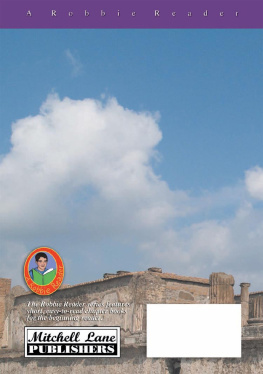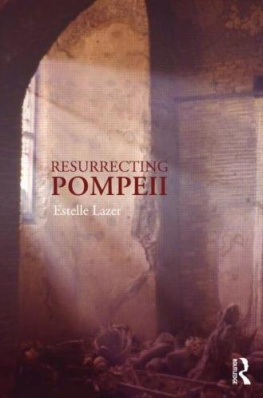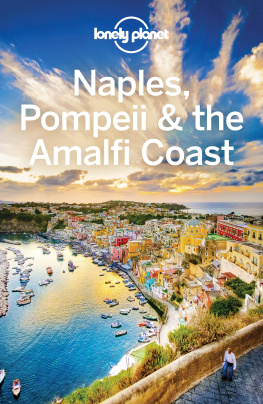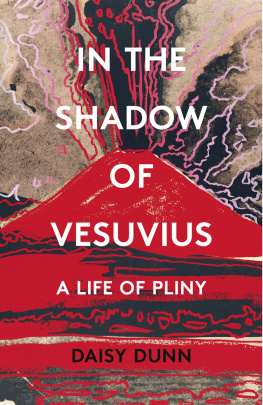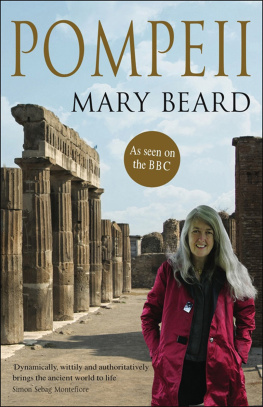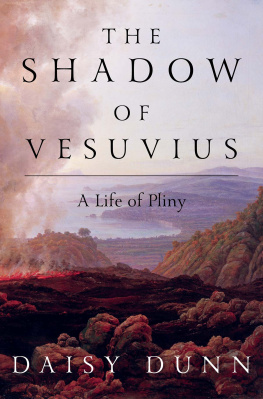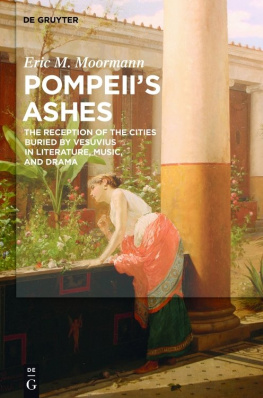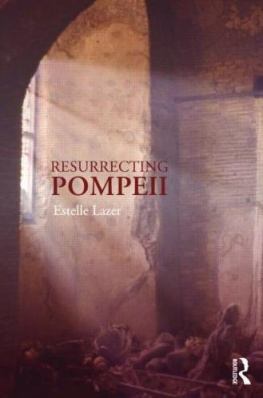
The author and publisher have provided this e-book to you for your personal use only. You may not make this e-book publicly available in any way. Copyright infringement is against the law. If you believe the copy of this e-book you are reading infringes on the authors copyright, please notify the publisher at: us.macmillanusa.com/piracy.
CONTENTS




Nothing can last for ever;
Though the sun shines gold
It must plunge into the sea.
The moon has also disappeared
Which but now so brightly gleamed.
Graffito from Pompeii
PROLOGUE:
The Far End of the Journey
October AD 79
It was the hour before dawn and the sky above Luxor was already showing the same sickly yellow hue that had tinted it every day for the past month. Not far from the towering statue of King Memnon a small group of men stamped and shivered against the unnatural cold, their cloaks gathered about them. Once in a while they would glance towards the statues vast stone feet, between which their master sat, a solitary figure, awaiting first light, when the ancient king would utter his famed greeting.
So still did Suedius Clemens, the Prefect of the Camps in Egypt, hold himself that, as the minutes passed, the dust that filled the air began to settle on his clothes and skin, covering them in a dark film. He had travelled far to arrive here, across the deserts of sand and the deserts within himself, and now was a moment for contemplation. Word of the disaster in far-off Campania had reached Alexandria while he had been finalising the preparations for his last tour of inspection. The first traders to hurry their ships back to Egypt, in flight from the plummeting fire and surging waves, had quickly filled Alexandria with tales of an apocalypse of how the mountain of Vesuvius had exploded into flames, breathing fire over the cities in its shadow and raining down stone.
Although Clemens had known Pompeii well, from his days spent there as the Emperor Vespasians sacred judge, when his advisors suggested that the planned expedition to the Egyptian interior be cancelled, he had overruled them without hesitation. But as the days had passed, he had come to regret his decision. With each step he took, memories of Pompeii drew ever closer.
Heading east from the Nile, the Prefect had counted the caravans crossing the land that thirsts; had watched them approach from one horizon and disappear over the other with their precious freight, and known that they might be heading for Pompeii. He had pressed on, far into the eastern desert, until he came to Mons Porphyrites, where rain fell only once every decade in a single torrential burst. There he had witnessed the terrible mines, and the men who quarried the bright stone without cease, lit at night by the flames from high-stoked pyres and watched over by the round towers of the garrison fortress. But in his minds eye it was the rare purple-flagged porphyry floors of Pompeii that he saw.
Looping back to the Nile, he had been thrown back into the world of Roman rule. To ears for so long assailed by orders barked out in rough soldiers Latin, the mellifluous Greek he heard in the towns and villages through which they passed was captivating, and the babble of the Egyptian boatman a balm to his mind. But he had forgotten how time had passed, that November had come, and he was caught unawares by the chants of Isis worshippers as they celebrated her lovers rebirth along the banks of the river. The slender ibises puncturing the water with their curved beaks and the crocodiles sliding into the Nile from their mud shoals were all too familiar from the painted walls of Pompeii.
At last, Clemens had reached Luxor and, with it, the end of his journey. In a few days he would return to Alexandria and then take ship to Italy. Would Pompeii still be there for him to see? the city he had judged so freely, yet which only now, perhaps too late, he had come to appreciate. Could anyone from Pompeii possibly have survived?
INTRODUCTION
In July 1738, workmen digging the foundations of a summer palace for Charles of Bourbon, the King of Naples, discovered the first hard evidence of the cities that had been buried by Vesuvius in AD 79. Statues and other fragments from antiquity had been coming to light in the area for centuries but it was only then that a new professionalism was brought to bear on the process of investigating what lay beneath the fertile fields of Campania. Passages were tunnelled down to the theatre of Herculaneum and occasional honoured visitors allowed to explore by torchlight, while treasures were added to the private Bourbon collections by the cartload. But the Kings excitement was tinged with frustration.
Although funding for the work in the area was unstinting, the great discrepancy between the present-day and ancient ground levels impeded progress. When, in 1755, the construction of the Sarno Canal revealed further remains a few miles away, this time only a few metres underground, it was hoped that the new site might allow far more rapid exploration. Working outwards from what was subsequently revealed to have been a complex of bars, baths and rental property belonging to a woman called Julia Felix, it soon became clear that an extensive lost world did indeed lie within reach. But what was this place that stood on a small escarpment that was still known in local folklore as Civita, or the City? The reticence in the classical sources on the subject of the eruption testifies to the depth of the shock that was felt at the time: all they offered to the King was a simple list of places that had been destroyed. Only when a dedicatory inscription came to light, was the truth revealed. The ancient city was Pompeii.
News spread fast by the standards of the day: a city was being unearthed on the Bay of Naples that still breathed with the life of ancient times. Amongst the educated classes of Europe, for whom the classical world was still a very present ideal, the chance to travel back in time was a marvel not to be missed. Pompeii, less than a hundred and fifty miles south of Rome, quickly became an indispensable destination on the Grand Tour. Goethe, the greatest poet of the age, visited and watched the excavation of a house that was named in his honour; William Hamilton, the British Ambassador to Naples, sent samples of volcanic materials to the Royal Academy, whilst his wife, Emma, became famous for adopting classical poses, or attitudes; others were to translate the aesthetic of Pompeii into Wedgwood pottery and Adam interiors; Mozart visited the newly uncovered Temple of Isis in 1769 and the memories of its mysterious precinct remained with him vividly enough to inspire the composition of The Magic Flute almost twenty years later (Plate 26). In the nineteenth century, the novelist Stendhal was inspired to write, The strangest thing I saw on my travels was Pompeii, where you feel as if you have been transported back into the ancient world; even if you normally believe only proven facts, here you feel as if, just by being there, you know more about the place than any scholar.
Next page

